5 hikes where you can find L.A.’s most iconic animals
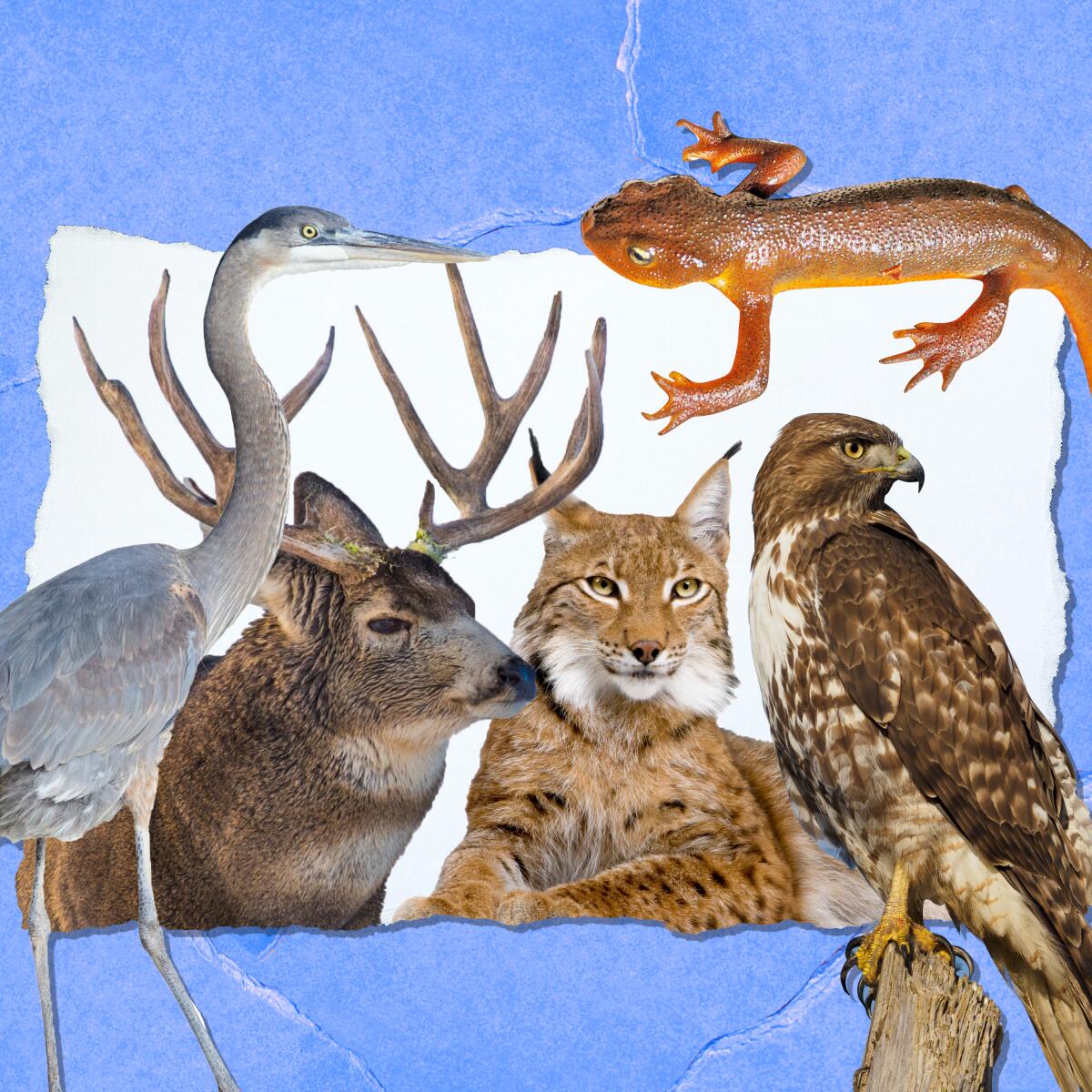
- Share via
Held in memory of conservationist Steve Irwin, Sunday’s National Wildlife Day encourages education about our world’s animals and celebrates those who work to protect them. Although you can always see L.A.’s most iconic animals at a wildlife sanctuary, it’s a thrill to see them out on the trail. For The Wild this week, I’ve rounded up five hikes for animal-watching. Bring a pair of binoculars.
Get The Wild newsletter.
The essential weekly guide to enjoying the outdoors in Southern California. Insider tips on the best of our beaches, trails, parks, deserts, forests and mountains.
You may occasionally receive promotional content from the Los Angeles Times.
A couple of notes: I’ve included only creatures we’d hope to encounter (sorry, mountain lions and black bears) and those we don’t see too often in our neighborhoods (I’m looking at you, coyotes and raccoons). Also, it’s always important to keep your distance and stay quiet and on the trail. Leave no trace and make some space.
And if you choose to go outside this weekend during the heat wave, make sure to take extra precautions and limit your time under the sun (especially if you’re with your canine companion). Enjoy these hikes safely and with plenty of water, sun protection and respect for the wildlife. This is their home too, after all.
The animal: great blue heron
The hike: L.A. River Walk, Elysian Valley
Fortunately for birdwatchers, there are an amazing number of spots across the city to check out our resident waterfowl. We’re lucky to have an incredible array — coots, cormorants, geese, stilts, snowy egrets, even mandarin ducks — near our urban trails. But there is one that particularly embodies L.A.: the great blue heron. There are plenty of great environments to spy these majestic beauties (El Dorado Regional Park in Long Beach or wetlands like Ballona, Bolsa Chica and Dominguez Gap), but the Elysian Valley is the ideal place. The bird is essentially the L.A. River mascot.
Start at Rattlesnake Park, where you’ll pass through the Great Heron Gates before hitting the L.A. River bike path. Walk or bike (or even kayak) for as long as you please, but a nice, short two-mile route includes a turnaround point at Spoke Bicycle Cafe. Be sure to look to the river to find great blue herons stalking silently for prey or soaring gracefully overhead.
The animal: red-tailed hawk
The hike: Ernest E. Debs Regional Park, Montecito Heights
Though there are a number of hikes to watch soaring red-tailed hawks in and around Los Angeles, the Audubon Center at Debs Park deserves special mention. You can learn from docents, borrow binoculars or attend a community bird walk to search for its more than 140 winged residents, including more familiar avian friends, such as scrub jays, and lesser-seen ones, like the great horned owls.
Get some birding tips from the Audubon before following your trail map along the five-mile highlight loop or a shorter 2.2-mile park-to-park stroll. Either way, search the skies for circling red-tailed hawks, who conserve energy and gain altitude through rising columns of air (thermals) before diving acrobatically to swoop on unsuspecting SoCal prey, like the California ground squirrel.
The animal: bobcat
The hike: Bear Canyon, Angeles National Forest
The Bear Canyon to Switzer Falls route is perhaps the most popular trail in the Angeles National Forest and rightly so — it’s shady, not too strenuous and features a 50-foot cascade and pools to swim in. And for whatever reason, it’s also the only place I have seen a bobcat (twice!) in over a decade of hiking in L.A. To increase your chances of catching one of the shy felines grabbing a morning drink at the river, get there super early and trek quietly. I like doing a slightly longer seven-mile trek that starts at Switzer Picnic Area and reaches Bear Canyon Trail Camp, where you can stay the night and have more time to enjoy the local scenery and wildlife.
The animal: mule deer
The hike: Old Zoo to Bee Rock, Griffith Park
Named for its ears that resemble those of a — you guessed it — mule, the brownish-gray herbivores can be spotted all around Griffith Park. I like searching for them on the eastern side of the park. The urban crepuscular mammals often graze on the fairways of the Wilson and Harding golf courses (try sunrise or sunset), and doing a hike across the street starting at the Old Zoo Picnic Area seems appropriate for a wildlife walk. If you prefer a bit of elevation, consider taking a 2.6-mile loop to Bee Rock (though the peak closes for falcon nesting in summer), otherwise the Mineral Wells Trail takes you north toward Amir’s Garden, and you can find Fern Canyon to the south, all the while looking for our deer friends.
The animal: California newt
The hike: Grotto Trail, Santa Monica Mountains National Recreation Area
Circle X Ranch is known as home to the landmark Sandstone Peak, but it’s also got the three-mile out-and-back Grotto Trail, which you’ll prefer in the summer heat. Here, you can also find the orange-bellied, endemic California newt. Although it spends spring and winter in water, it’s often found in moist, shaded areas in the summer. Just keep an eye on the kids; they may get excited seeing the salamanders, but they’re neurotoxic — meaning poisonous, so make sure everyone keeps their distance.
5 things to do this week
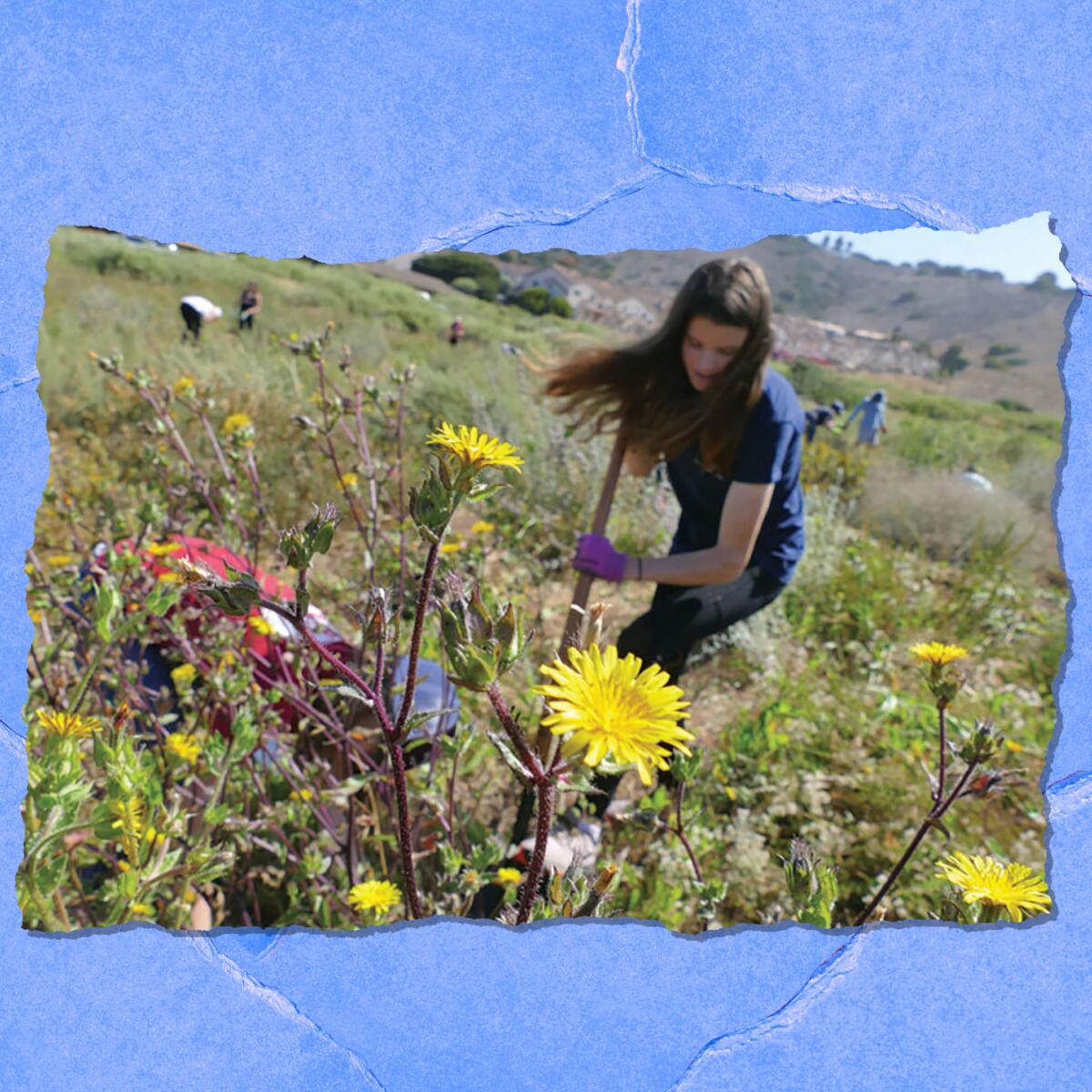
1. Help restore native vegetation at the Alta Vicente Reserve in Ranchos Palos Verdes. On Saturday from 9 a.m. to noon, volunteer with the Palos Verdes Peninsula Land Conservancy and support habitat restoration for cactus wrens and California gnatcatchers. Register here. Consider also exploring the coastal sage scrub environment through a small trail system that features prickly pear cacti, WWII installations and unparalleled views of Catalina Island.

2. Enjoy a guided nature walk with volunteers at Mt. San Jacinto State Park. This weekend — Saturday and Sunday at 11 a.m. and 1:30 p.m. — is your last chance of the season to experience a docent-led hike from the Palm Springs Aerial Tramway’s Mountain Station. The 11 a.m. tour visits the 1.5-mile Desert View Trail, which, not surprisingly, features phenomenal vistas of the desert below, and the 1:30 p.m. walk traverses the 0.75-mile Long Valley Discovery Trail loop. If you seek more mileage, consider the area’s other awesome hike adventures.

3. Experience the 28th Festival of Philippine Arts and Culture at L.A.’s MacArthur Park. Check out FPAC, presented by FilAm Arts, on Saturday from 4 to 10 p.m. at MacArthur Park’s Levitt Pavilion. It’s the first in-person celebration since 2017 and features live performances, Philippine food booths, storytelling, art exhibits and more.

4. Check out an international mural festival in Long Beach. Through Sunday, the coastal city hosts Stand Up!, an expansive free outdoor art festival with Long Beach Walls and Art Renzei. Grab your digital passport, explore the featured murals and attend one of many events, including a mural bike ride and the closing party with KCRW Summer Nights. For more murals, I curated a route through Long Beach’s Cambodia Town that includes a classic beach walk.
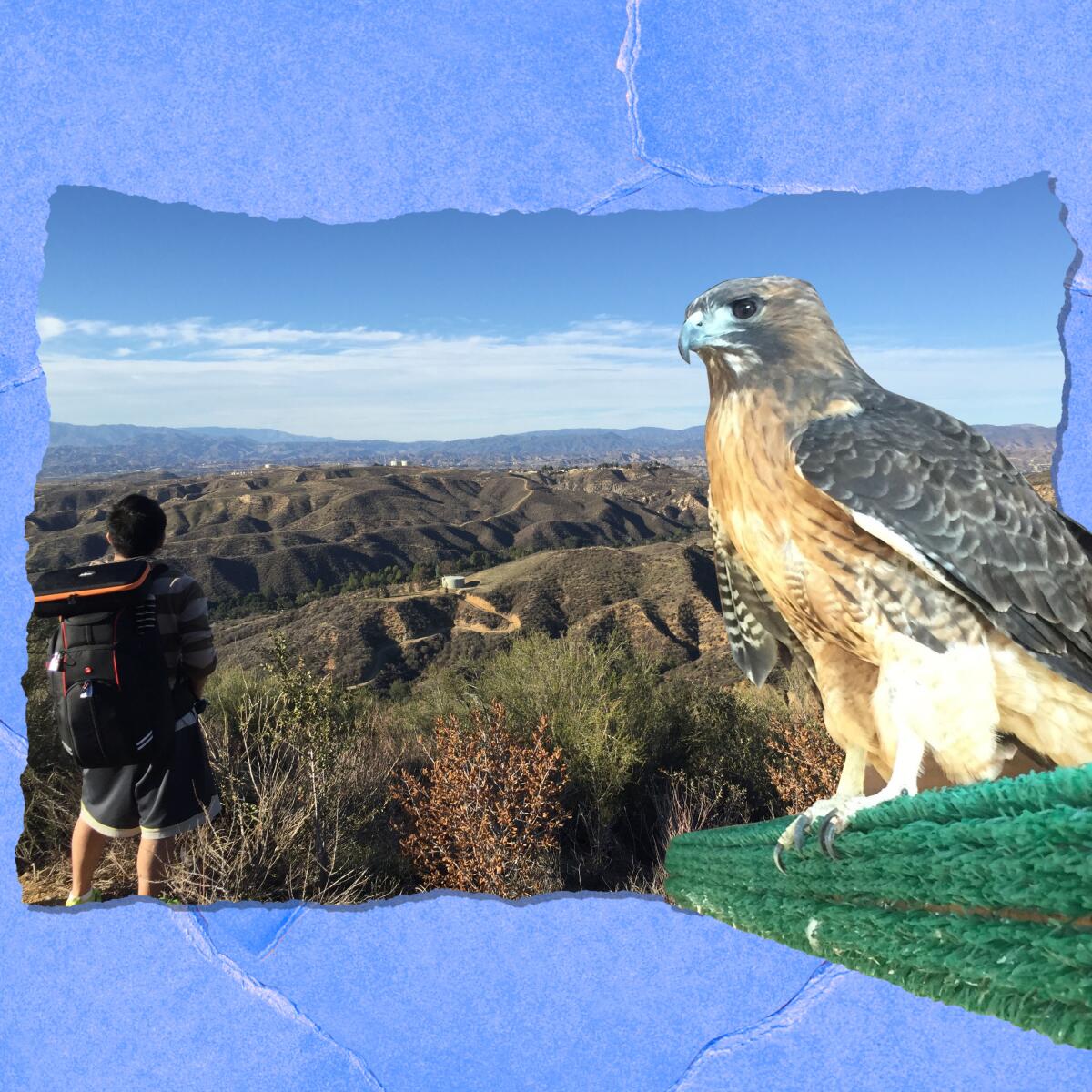
5. Learn about local wildlife in animal-abundant activities at the Placerita Canyon Natural Area. Located in Newhall at the western edge of the San Gabriels, the huge green space features a multitude of hikes through chaparral hillsides, oak woodlands and riparian environments. It also has fantastic naturalist-led interpretive programs. On Saturday, check out three of them in the nature center, including an 8 a.m. bird walk and a 10 a.m. animal show, where visitors can meet and learn all about the park’s animal ambassadors.
Our daily news podcast
If you’re a fan of this newsletter, you’ll love our daily podcast “The Times,” hosted every weekday by columnist Gustavo Arellano, along with reporters from across our newsroom. Go beyond the headlines. Download and listen on our App, subscribe on Apple Podcasts and follow on Spotify.
Wild things

“1…2…3, blue butterfly!” Cameras snapped as a peninsula partnership celebrated the announcement of the “Go Wild for the Peninsula” campaign, funding the creation of a 96-acre Wildlife Corridor that aims to restore native flora, reduce fire risk and protect local fauna like the cactus wren, California gnatcatcher and the endangered Palos Verdes blue butterfly.
I attended the kickoff event led by the Palos Verdes Peninsula Land Conservancy, with support from the city of Rancho Palos Verdes, the L.A. County Regional Park and Open Space District and both U.S. and California departments of fish and wildlife — the entities have contributed $19.7 million of the $30-million goal to preserve this important stretch of coastal land.
“It really is the missing puzzle piece for the Palos Verdes blue,” Cris Sarabia, PVPLC conservation director, told me as he poured recycled water on a narrowleaf milkweed (an important plant for resident Monarch butterflies) after the event. The plan for this important coastal connector is to remove fire-risk invasives (acacia, fennel and those pesky yellow mustards) and replace them with drought-tolerant natives, like rattlepod, which Palos Verdes blue butterflies rely on to survive. PV blues may claim the “world’s rarest butterfly” title, but the opportunity for such a passionate partnership to preserve such a significant coastal corridor is truly special.
Cool stuff
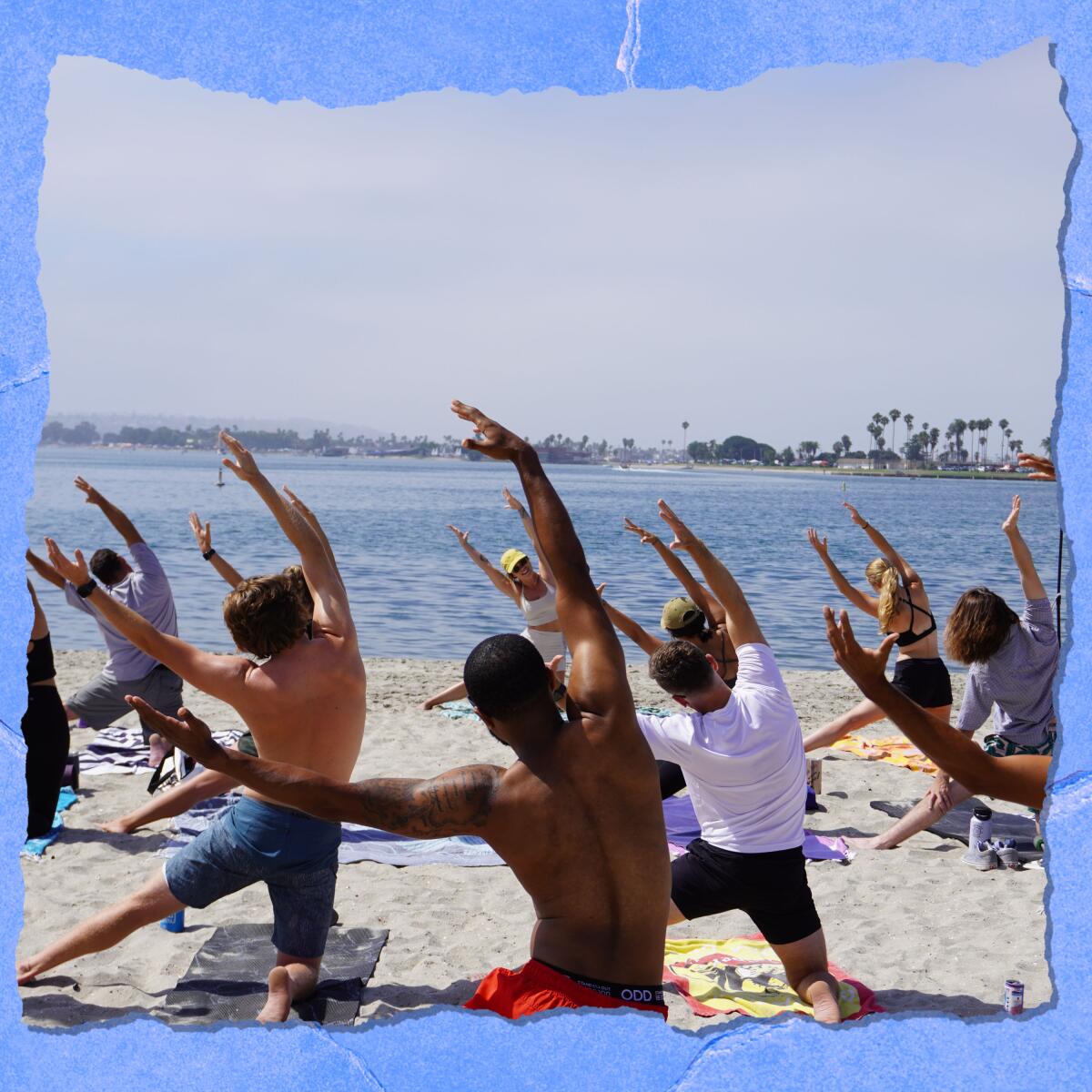
Looking for a pickleball partner or basketball buddy? Find all types of fitness friends through a new social app that “helps connect people to the activities they love.” After finding they had less and less time for the active experiences they enjoyed, founders Cody Anderson and Connor Wynveen decided to restore the balance between work and play. With actLive, they hope to inspire people to get active outdoors and encourage community building among those who share the same passions. The app launched last month in SoCal and has a growing number of events across L.A.
P.S.
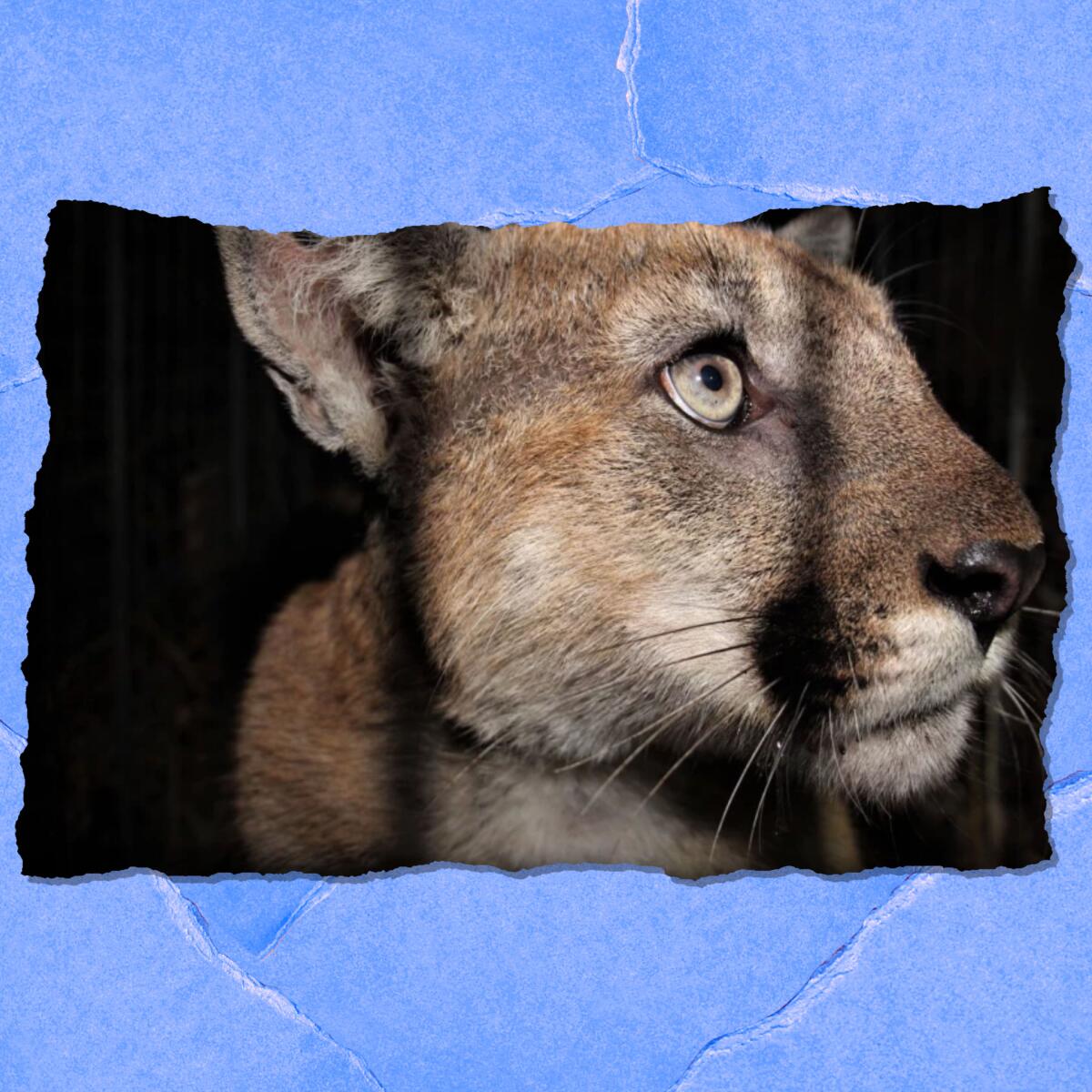
Just one month after P-89 was struck and killed along the 101, his mountain lion brother, P-90, was hit and died along California 33 in Ojai, Times staff writer Christian Martinez reported. On Friday, the 2-year-old puma, who had been called a “trailblazer” because of his multiple freeway crossings, was celebrated by the National Park Service for his travels, which help diversify the gene pool.
The young mountain lion was the seventh killed this year in a “road mortality” in the National Park Service’s study area, which spans the Santa Monica Mountains, Simi Hills, Griffith Park and the Santa Susana and Verdugo mountains. The Liberty Canyon wildlife bridge is expected to be completed in 2025, but until then motorists have to do their best to spot these crossing cougars.
For more insider tips on Southern California’s beaches, trails and parks, check out past editions of The Wild.
Sign up for The Wild
We’ll help you find the best places to hike, bike and run, as well as the perfect silent spots for meditation and yoga.
You may occasionally receive promotional content from the Los Angeles Times.




